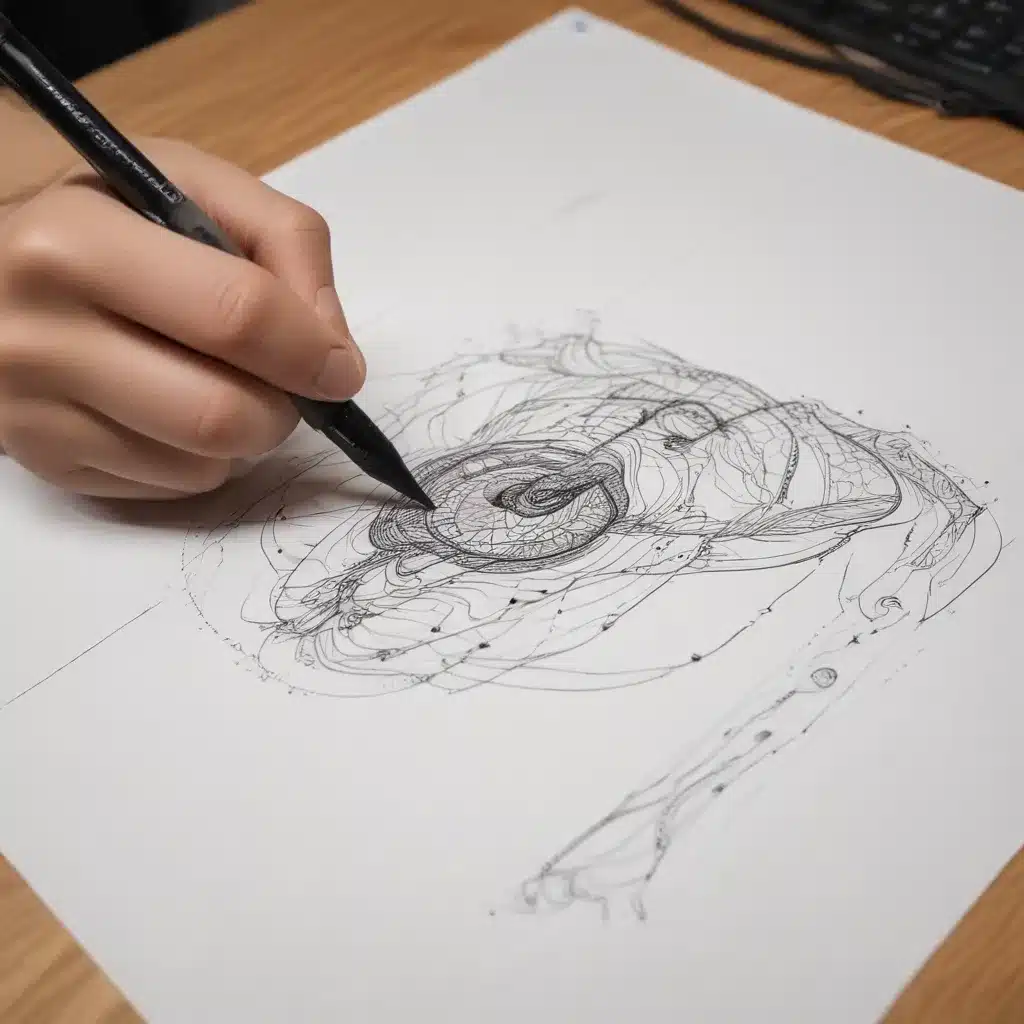
In the ever-evolving world of artistic expression, the boundaries of traditional drawing and painting techniques continue to expand. In our 15 years installing… Today’s modern artists are embracing a wide array of unconventional tools and materials to push the creative envelope, unlocking new realms of possibility in their work. From repurposed household items to innovative texturing methods, the possibilities for experimental art-making are truly boundless.
Repurposed Household Items
One of the most exciting frontiers in contemporary drawing and mixed media lies in the realm of everyday objects. Rather than relying solely on classic drawing tools like pencils, pens, and charcoal, today’s artists are finding inspiration in the most unexpected places – kitchen utensils, hardware store finds, and recycled materials.
Palette Knives and Spatulas: Move over, paintbrushes – palette knives and painting spatulas are emerging as versatile and dynamic drawing tools. These unassuming implements can be used to create rich, expressive marks, scrape back layers of media, and achieve nuanced textures on the drawing surface. The sharp edges and flexible blades of palette knives, in particular, allow artists to carve into surfaces, scrape away pigment, and make dynamic gestural marks.
Sponges and Rags: Drawing doesn’t always have to involve traditional drawing implements. Many artists are harnessing the unique properties of sponges, rags, and other absorbent materials to apply, remove, and manipulate media in unexpected ways. Sponges can be used to blot, stipple, and stamp pigment onto the page, resulting in organic, atmospheric effects. Crumpled rags, on the other hand, can be employed to softly blend and smudge graphite, charcoal, and other dry media, creating hazy, ethereal qualities.
Homemade Stamps: For artists seeking to introduce unique textures and patterns into their drawings, homemade stamps offer endless creative potential. Anything from cork to sponges to found objects can be transformed into custom-made stamps that allow for the repetition of marks, the creation of geometric designs, and the incorporation of unexpected visual elements. The spontaneity and unpredictability of homemade stamps can breathe new life into a drawing, infusing it with an organic, handmade quality.
Unique Texturing Techniques
Beyond unconventional drawing tools, modern artists are also exploring a vast array of unique techniques for creating captivating surfaces and textures in their work. From sgraffito to blotting to embossing, these experimental approaches offer artists a means of imbuing their drawings with unparalleled depth and complexity.
Sgraffito and Scraping: The technique of sgraffito, where artists scratch into layers of media to reveal underlying colors or textures, has become a popular way to introduce dynamic, expressive marks into drawings and mixed media pieces. Similarly, the act of scraping back layers of pencil, charcoal, or paint can produce unexpected, ghostly effects and uncover hidden elements within the composition.
Blotting and Stamping: For those seeking a more spontaneous, gestural quality in their drawings, the techniques of blotting and stamping can be incredibly effective. Blotting wet media like ink or watercolor with absorbent materials like paper towels or rags can result in soft, atmospheric washes and organic, cloud-like shapes. Stamping found objects or handmade tools into wet media, on the other hand, allows artists to infuse their work with unique, repeating patterns and unexpected textures.
Embossed Surfaces: Introducing physical, dimensional elements into a drawing can transform a two-dimensional work into a tactile, immersive experience. Embossing techniques, where artists press objects or tools into the drawing surface to create raised, sculptural textures, can lend an almost sculptural quality to a drawing. These dimensional effects can be achieved through a variety of methods, from pressing found objects into the paper to using specialized embossing tools.
Nontraditional Canvases
In addition to experimenting with unconventional drawing tools and techniques, modern artists are also expanding the very definition of what constitutes a “canvas” for their work. By embracing a diverse array of nontraditional surfaces, these artists are imbuing their drawings with unexpected materiality and injecting new life into the creative process.
Fabric and Textiles: For artists seeking to blur the boundaries between drawing, painting, and fiber arts, the use of fabric and textiles as a drawing surface can be truly transformative. The inherent texture and drape of materials like canvas, burlap, and even clothing can inform the character of the marks and lend a unique, tactile quality to the final work. Additionally, the ability to stitch, embroider, or applique directly onto the drawing surface opens up endless possibilities for visual and conceptual exploration.
Found Objects: The act of repurposing found objects as “canvases” for drawings has become an increasingly popular approach among modern artists. From weathered wooden panels to discarded metal sheets to recycled packaging, these unconventional surfaces can imbue a drawing with a sense of history, decay, and visual intrigue. The unique properties and idiosyncratic shapes of found objects can also inspire and challenge the artist to approach the drawing process in new and innovative ways.
Recycled Materials: In an era of heightened environmental awareness, many artists are turning to recycled and reclaimed materials as the foundation for their drawings. Paper bags, cardboard, and even plastic sheeting can serve as surprisingly versatile and visually compelling drawing surfaces, allowing artists to integrate concepts of sustainability and repurposing into their creative practice. The inherent textures and neutral tones of these recycled materials can also become an integral part of the drawing’s visual language, complementing the marks and media applied by the artist.
Throughout the ever-evolving landscape of contemporary art, the exploration of unconventional drawing tools and techniques continues to push the boundaries of what is possible. From repurposed household items to innovative texturing methods to nontraditional drawing surfaces, today’s artists are embracing a spirit of experimentation and discovery, unlocking new realms of creative expression and challenging the very definition of what it means to draw. By embracing this spirit of playful, inventive art-making, aspiring artists can unlock their full creative potential and forge their own distinctive visual voices.
Tip: Experiment with different media to discover your unique style